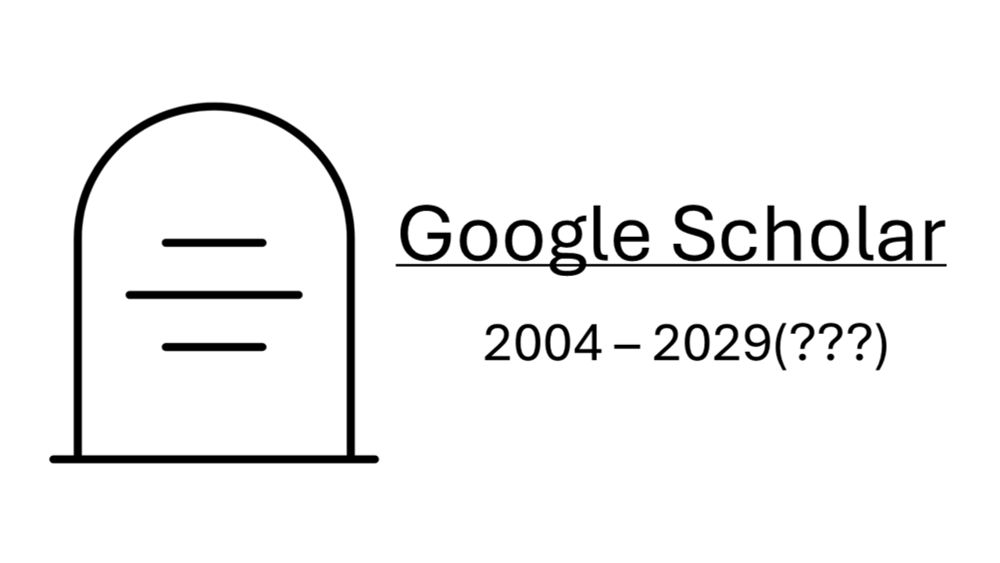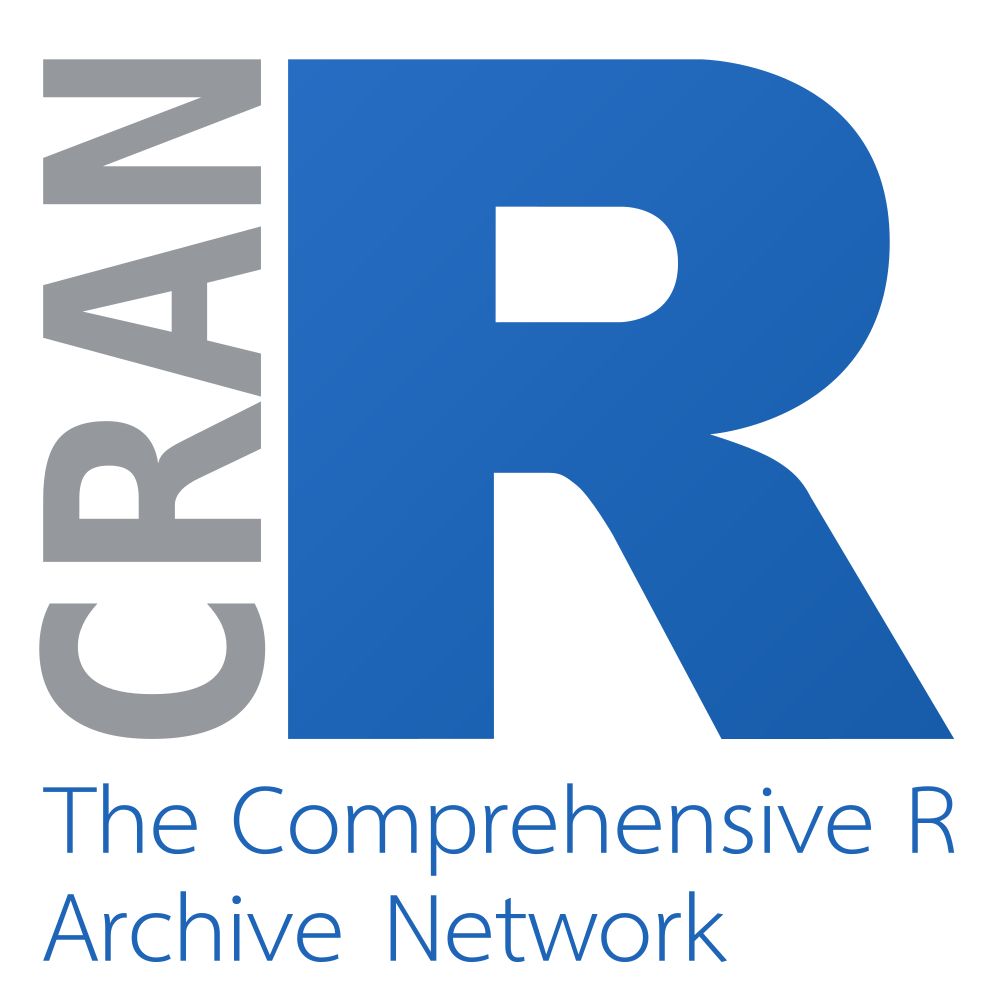The existence of the bariance implies the existence of the bean
08.10.2025 08:33 — 👍 3 🔁 1 💬 0 📌 0Benjamin Rosenbaum
@benrosenbaum.bsky.social
Quantitative ecology | Statistics | Species interactions | Population dynamics iDiv.de Leipzig, Germany
@benrosenbaum.bsky.social
Quantitative ecology | Statistics | Species interactions | Population dynamics iDiv.de Leipzig, Germany
The existence of the bariance implies the existence of the bean
08.10.2025 08:33 — 👍 3 🔁 1 💬 0 📌 0
We ask all Privatdozent:innen, Professor:innen and other colleagues, including solidaric colleagues abroad, to sign this letter and thus support our cause. You can find and sign the letter via the following link: chng.it/VhcP5tDBBY
06.10.2025 19:17 — 👍 1 🔁 2 💬 1 📌 0
Alien Earth
06.10.2025 20:28 — 👍 6 🔁 2 💬 0 📌 0A brief delve into the recent science history of network theory (including food webs)
06.10.2025 09:36 — 👍 2 🔁 1 💬 0 📌 0They are calling it "The lemon of the north" on their website
03.10.2025 09:20 — 👍 2 🔁 0 💬 0 📌 0
Wünsche dem @verbrecherverlag.bsky.social alles Gute zum 30. Geburtstag. Aktuell auf meiner Leseliste ist der Sammelband "Klimawandel und Gesellschaftskritik"
01.10.2025 14:41 — 👍 4 🔁 1 💬 1 📌 0 20.09.2025 16:21 — 👍 3 🔁 0 💬 1 📌 0
20.09.2025 16:21 — 👍 3 🔁 0 💬 1 📌 0
MC Stan is here! Follow for the latest Stan news, and tag if you want us to repost your posts about new papers, packages, courses, etc. about Stan
17.09.2025 15:16 — 👍 38 🔁 33 💬 1 📌 0Simulations are no longer just “nice to have.” They’re reshaping how we do statistics.
Care to learn more? Check out our paper arxiv.org/abs/2503.24011, accepted for publication in the upcoming theme issue of Philosophical Transactions A.

Poster for 90 minute workshop on HOW TO DESIGN BETTER EXPERIMENTS, by Mridul Thomas & Ravi Ranjan. Details: September 23rd 16:00 CEST ; 14:00 UTC Description: Experimental designs can make or break an experiment. A good experiment has a clear goal and efficiently uses experimental resources to achieve that goal. In this workshop, we will review what experiments are for, basic and advanced principles of designing experiments, and how to use simulations to evaluate designs before actually doing the experiment. We’ll do a moderate amount of coding in R and so experience with this would be helpful but is not required. We intend to have small-group discussions to help participants develop their own experiments, and encourage participants to think of a specific question they would like to answer with an experiment.
@raviranjan.bsky.social & I are teaching a free online workshop with on experimental design for environmental scientists on the 23rd.
We'll focus on using simulations to evaluate how well different experimental designs help achieve your goals.
Please sign up & share! forms.gle/MZTxeQs4UpMr...

Jetzt kommt es auf die Hochschulleitungen an
Nach dem Scheitern der Ampel muss die neue Koalition beim #Wissenschaftszeitvertragsgesetz endlich liefern. Gleichzeitig steigt der Druck auf die Rektorate und Präsidien.
Im Wiarda-Blog: www.jmwiarda.de/blog/2025/09...
Before becoming a computational ecologist, I was working in fluid dynamics (for airplanes). This is going to be an interesting and fun read!!
14.09.2025 13:39 — 👍 4 🔁 0 💬 0 📌 0
Stan / CmdStan 2.37 release!
blog.mc-stan.org/2025/09/02/r...
- sum_to_zero_matrix type sums to zero across both rows and columns
- simplex and *_stochastic_matrix types should be now faster and more stable
- new functions exposing the built-in constraint implementations
1/2

Rare sighting of a theoretician in the field
27.08.2025 15:44 — 👍 5 🔁 0 💬 0 📌 02025 shit is hitting the fan so hard that Werner Herzog is starting social media
26.08.2025 20:39 — 👍 1 🔁 0 💬 0 📌 0Davon mal abgesehen, dass der Begriff "Coach" kein rechtlich geschützter ist & jede/r sich so nennen kann (ich bitte auch alle Coaches in meiner Bubble, das Folgende nicht persönlich zu nehmen) – es braucht kein x-tes Coaching zu 'mental strength in academia', 'Wege aus Wissenschaft', 1/2
25.08.2025 14:26 — 👍 56 🔁 7 💬 4 📌 1
Models as Prediction Machines: How to Convert Confusing Coefficients into Clear Quantities Abstract Psychological researchers usually make sense of regression models by interpreting coefficient estimates directly. This works well enough for simple linear models, but is more challenging for more complex models with, for example, categorical variables, interactions, non-linearities, and hierarchical structures. Here, we introduce an alternative approach to making sense of statistical models. The central idea is to abstract away from the mechanics of estimation, and to treat models as “counterfactual prediction machines,” which are subsequently queried to estimate quantities and conduct tests that matter substantively. This workflow is model-agnostic; it can be applied in a consistent fashion to draw causal or descriptive inference from a wide range of models. We illustrate how to implement this workflow with the marginaleffects package, which supports over 100 different classes of models in R and Python, and present two worked examples. These examples show how the workflow can be applied across designs (e.g., observational study, randomized experiment) to answer different research questions (e.g., associations, causal effects, effect heterogeneity) while facing various challenges (e.g., controlling for confounders in a flexible manner, modelling ordinal outcomes, and interpreting non-linear models).

Figure illustrating model predictions. On the X-axis the predictor, annual gross income in Euro. On the Y-axis the outcome, predicted life satisfaction. A solid line marks the curve of predictions on which individual data points are marked as model-implied outcomes at incomes of interest. Comparing two such predictions gives us a comparison. We can also fit a tangent to the line of predictions, which illustrates the slope at any given point of the curve.

A figure illustrating various ways to include age as a predictor in a model. On the x-axis age (predictor), on the y-axis the outcome (model-implied importance of friends, including confidence intervals). Illustrated are 1. age as a categorical predictor, resultings in the predictions bouncing around a lot with wide confidence intervals 2. age as a linear predictor, which forces a straight line through the data points that has a very tight confidence band and 3. age splines, which lies somewhere in between as it smoothly follows the data but has more uncertainty than the straight line.
Ever stared at a table of regression coefficients & wondered what you're doing with your life?
Very excited to share this gentle introduction to another way of making sense of statistical models (w @vincentab.bsky.social)
Preprint: doi.org/10.31234/osf...
Website: j-rohrer.github.io/marginal-psy...

Since search is dead, how soon do you think Google Scholar is headed for the Google Graveyard? I'm betting it's soon, and academia is NOT prepared
13.08.2025 01:28 — 👍 724 🔁 338 💬 48 📌 102We talk more about visual posterior predictive checking and above plots in teemusailynoja.github.io/visual-predi....
The next bayesplot release will give a warning if PPC bar graphs are used with less than 6 unique outcome values, with a link to a page containing suggestions for better plots. 4/4

A tuxedo cat about to drench himself in catnip
Brought out the good stuff for #caturday
09.08.2025 11:09 — 👍 19 🔁 0 💬 0 📌 0It worked in the end with fighting a pen&paper index battle. But thanks for the hint, I'm quite new with nimble and didn't know this!
31.07.2025 15:20 — 👍 1 🔁 0 💬 1 📌 0At least ChatGPT was good at telling me what does NOT work
31.07.2025 09:35 — 👍 1 🔁 0 💬 0 📌 0Spent the better part of the morning trying to populate a non-square matrix in NIMBLE, with constants on upper triangle and variables on lower triangle and block. Extra-challenge: no if-statements and no custom running indices allowed, just slicing all the way. 🫠
#Rstats

New on CRAN: staninside (0.0.4). View at https://CRAN.R-project.org/package=staninside
30.07.2025 13:36 — 👍 2 🔁 2 💬 0 📌 0R packages LaplacesDemon or BayesianTools come to my mind
30.07.2025 14:13 — 👍 1 🔁 0 💬 0 📌 0
That's a good question. The method has a parameter controlling the level of sparsity and you can control it with a meaningful prior. Will have to read it up carefully before applying, it's described in the SI and refers to Piironen & Vehtari (2017)
30.07.2025 13:12 — 👍 1 🔁 0 💬 0 📌 0Cool, they're also using the regularized horseshoe prior. I'm trying to estimate self-regulation in aquatic field data which seems to be notoriously hard, so I'll have to bring out the big guns, too
30.07.2025 09:06 — 👍 0 🔁 0 💬 1 📌 0Cool, they're also using the regularized horseshoe prior. I'm trying to estimate self-regulation in aquatic field data which seems to be notoriously hard, so I'll have to bring out the big guns, too
30.07.2025 09:05 — 👍 0 🔁 0 💬 0 📌 0Who would have thought: Sicherheit führt *nicht* zu #Einkuscheln. Existenzangst hingegen lähmt.
#PDprekär #IchBinHanna #IchBinReyhan #WissZeitVG

Paper recommendation: A sparse modelling approach for analyzing community dynamics (20-40 species), using a regularized horseshoe prior for N² species interactions (zero vs non-zero), and a dimension-reduction approach for the N² residual correlation matrix (influences of unmeasured covariates) 🔥
29.07.2025 08:36 — 👍 12 🔁 2 💬 1 📌 1